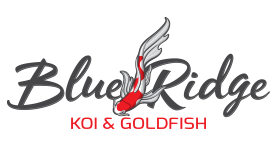Summertime is a favorite for Koi pond enthusiasts, but the warm weather comes with challenges. Following a few simple maintenance tips will help you and your Koi enjoy summer to the fullest.
Increase Oxygen Levels
Warm temperatures can cause oxygen levels in your pond to drop, which can be extremely dangerous for fish. During the summer months, it’s important to maximize your aeration. Oxygen levels should be at a minimum of 7 ppm. Aeration pumps, air stones, and water features like waterfalls and fountains can all promote higher oxygen levels.
Maintain Water Quality
Koi ponds can experience higher levels of waste in the summertime. Remove any leaves or floating debris from your pond as soon as possible and perform 10-20% water changes each week. Additionally, organic materials break down quicker in warmer temperatures, negatively impacting water quality. Because of this, regular water quality checks are essential. Optimal levels for pH are between roughly 7.4 and 8.4, ammonia at 0, nitrates at 20 to 60 ppm, and nitrites at close to 0.
Monitor Water Levels
When the weather is warmer, pond water will evaporate much more quickly than in the cooler months. Reduced water levels will create a smaller physical ecosystem, which can lead to overcrowding and cause stress to Koi. You can maintain water levels in your pond by supplementing it with clean, de-chlorinated water. These water top-offs are not in place of weekly water changes but rather in addition. You should perform a water change of 10-20% each week, depending on water parameters.
Prevent Algae Overgrowth
When well-balanced, algae are extremely beneficial to your pond ecosystem. Algae help oxygenate water, provide shade and shelter for Koi, and aid in the nitrogen cycle in your pond. However, too much algae can cause issues in your pond. The increased waste, water temperatures, and sunlight in the summer months can lead to an overgrowth of algae. An excess of algae can deplete oxygen levels in your pond and give off carbon dioxide, which can quickly harm the health of your Koi and pond. If you start to notice algae overgrowth in your pond, the first step is to manually remove large blooms by scooping, raking, or vacuuming them. Once large blooms are removed, adding netting, shade, or aeration can help prevent future algae overgrowth.
Provide Plenty of Shade
While Koi can survive fairly hot temperatures, that doesn’t mean it’s comfortable or healthy for them. When your pond gets too hot, essential nutrients in your pond’s ecosystem become depleted, and dissolved oxygen levels drop. Sail-cloths, umbrellas, and pond plants are all effective ways to provide shade to your pond in the summer months.
Avoid Overfeeding
Koi are much more active in the summer and require more food, but it’s important not to overfeed. Overfeeding will result in excess food in your pond and excess waste from your Koi, both of which can negatively impact water quality. To avoid this, try feeding three to four small meals a day. Only feed them as much as they will eat in 3-5 minutes. When feeding time is over, be sure to remove any excess food from your pond.
Download PDF
Comments are closed.